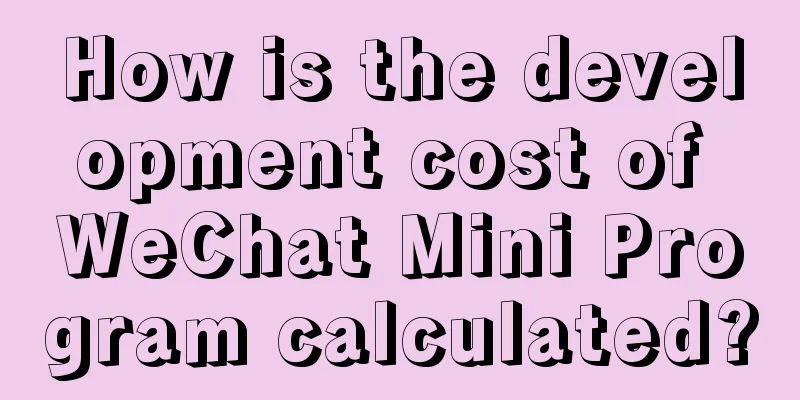The evolution of the Android ecosystem in the past five years

|
The first Android phone G1 jointly developed by Google, HTC and Qualcomm ushered in the Android era in the mobile era (as shown in Figure 1). Until now, Android is the only platform that can compete with iOS in the mobile market. Simply put, Android and iOS have taken the lead in the mobile era (this story starts with the iPhone in 2007 and the Android G1 in 2008, and even the development history and merger history before that). App developers have already established a deep foundation on Android and iOS, so they no longer have the ability or need to develop or port their own apps for a third platform. The reason is simple, because the audience is too small and the expenditure is not proportional to the income. At the beginning, the Android ecosystem was very simple, which was to attract App developers and seek cooperation with more chip manufacturers and mobile phone manufacturers to jointly promote the open platform of Android. However, as the market share of Android gradually increased, Google began to tighten and control the development of the ecosystem step by step, hoping to gain more benefits from the Android platform (simply put, revenue, Google hopes that Android can bring more profits to itself), and was no longer satisfied with just creating and providing the Android platform. As Android has expanded its territory and appeared on more and more mobile devices, coupled with Google's change in Android strategy, the current Android ecosystem has become much more complex than before, with more roles in the system than before, such as telecom operators, car manufacturers, streaming content and media providers, etc. Google's strategy in the global mobile market has also changed from "mobile first" to "occupy all screens (devices)", and Android is also trying to move forward towards this goal (as shown in Figure 2). Today, mobile phone manufacturers in Europe, the United States, and Japan are losing ground. Old manufacturers such as Motorola, Nokia, and Sony have laid off employees (or even sold their mobile phones and mobile businesses), while Chinese mobile phone manufacturers are rising. After ZTE, Huawei, Lenovo, Coolpad, OPPO, Xiaomi, etc. have entered the mobile phone market, China has now become the world's largest producer and seller of smartphones, and the number of smartphone users has long surpassed that of the United States. Emerging foreign markets such as India, South America, and Southeast Asia are experiencing a storm of low-priced smartphones, and Android is the driving force behind this wave of low-priced smartphones (such as Android One using MTK chips). Low-priced smartphones are sweeping the markets of emerging countries, and the markets of emerging countries have become an important battlefield for smartphones. Android's ambitions are certainly not limited to this. Android intends to focus on the high-, medium-, and low-end smartphone markets, and these subtle changes are gradually affecting the transformation of the Android ecosystem. Android's openness and constraints Android was initially led by Andy Rubin. From the beginning, it was fully open, and then like choosing a concubine, every time a new version of Android software was released, it chose to cooperate with specific mobile phone manufacturers to develop Android native phones, such as HTC, Samsung, etc. This move made all mobile phone manufacturers look up to Android and want to cling to Android's thighs. Because once a mobile phone manufacturer gets the opportunity to cooperate with Android to develop a new version of a native phone, it means that it can get the new version of Android software code in advance, and then take the lead in developing other products of its own (such as Samsung's Galaxy series), and launch its own products to the market before its competitors, thereby gaining a market advantage. This approach undoubtedly makes some mobile phone manufacturers disgusted with Android. In March 2013, Android was transferred from Andy Rubin to Sundar Pichai, who was the former leader of Chrome. Android also changed from an engineering-oriented to a profit-oriented one, for example, reducing the revenues shared between mobile phone manufacturers and Google from Google Play and Google Search. Android more strongly dominated the consistency of its UI display, and signed binding agreements with various mobile phone manufacturers, forcing Google's related applications to serve on the Android system, and even imposed restrictions on the placement of applications on the Android desktop, which greatly tightened the scattered and fragmented UI styles of various Android device manufacturers, in order to allow users to get the same user experience on all Android devices such as cars, TVs, wearable devices, and mobile phones. This move by Google also caused disgust among some mobile phone manufacturers and developers. Ultimately, Google still hopes that its role can be between users and operators like Apple, changing from the current "users/mobile phone brands → operators" to "users/mobile phone brands → Google → operators", in order to tighten the scattered and fragmented Android ecosystem and gain greater potential benefits. We can see this in the latest Android L version of the software, where Google has added more features required by specific operators. In the era of mobile Internet, Android has become a standard platform of Google, rather than being integrated with Chrome into a new platform or integrating Android into Chrome as rumored in the past. In this case, it is crucial for Android device manufacturers to respond to Google's strategic adjustments and the rapid evolution of Android versions, and adjust themselves to quickly position themselves in the market, so as to avoid becoming just workers working for Google. Android device manufacturers must create their own unique ecosystem (for example, across mobile phones, tablets, TVs, etc.), rather than just being a device manufacturer. In this way, we can clearly see that it is becoming increasingly difficult for pure mobile phone manufacturers to survive. Android system and architecture evolution From Android 1.0 to the present (even from m* before 1.0 to the present), each version of the Android system has undergone many changes (as shown in Figure 3). For example, HAL has undergone two version improvements, Camera HAL has been iterated to the third version, and the multimedia core has evolved from OpenCore to the current Stagefright. The original WebView has been completely replaced by Chrome, and Android has also expanded from ARM to x86 and MIPS platforms. There are so many processes and contents of version evolution that if I really want to write about it in detail, I may not be able to finish it in three days and three nights, so I would like to give only a representative description of the changes in each version, and finally give some basic introduction to the latest version of Android (codenamed L). Android 1.0: The first Android phone and the birth of Google Apps; Android 1.5 Cupcake: support for software keyboard; Android 1.6 Donut: supports CDMA; Android 2.0 Éclair: GPS shines, Google Nexus One phone is born; Android 2.2 Froyo: added voice recognition function; Android 2.3 Gingerbread: Nexus S; Android 3.0 Honeycomb: The first time the UI was designed specifically for tablet devices; Android 4.0 Ice Cream Sandwich: A new UI interface Holo with built-in font Roboto, and support for face unlocking; Android 4.1 Jelly Bean: Nexus 7: Google's first official Android tablet device; Android 4.3 Jelly Bean: introduced support for wearable devices; Android 4.4 KitKat: Support for mobile devices with less memory. Next is Android L, which has ART as its default virtual machine and supports 64-bit. It requires more system space than previous Android versions because ART has a file format conversion process. The disadvantage is that it will take up more system space, but the software execution speed may be improved. In addition, Android L may add special requirements for some regions and operators, such as multi-SIM, NFC, Wi-Fi, etc. In addition, Android L also emphasizes system security. It can be preset to mandatory security mode, that is, when general applications are started, multiple identity and permission confirmations are required before they can be executed. Today, Android is almost everywhere. Looking back, the evolution of the Android system has always been to first have it and then to make it better. As the smart mobile era has developed to this day, the world is moving towards the next milestone. I hope that Android will not forget its original intention and become the maintainer and leader of a balanced ecosystem, rather than just a broker of interests. Don't let this ecosystem become closed for the sake of profit. As developers, we should now think about the fact that we have such huge market advantages, a sound logistics system and cash flow system, as well as a large number of mobile phone and mobile device manufacturers. If we can actively cultivate system-level software talents, we may be able to create an independent ecosystem from China in order to compete with Android in the future. The author, Zhong Wenchang, is the first industry instructor in Taiwan to teach how to port Android to actual hardware platforms from scratch. He has trained thousands of Android-related professional R&D personnel, including engineers, architects, product managers, senior executives, and marketers. |
<<: Mobile developers should know: Five major mobile design trends in 2015
>>: Microsoft to write off billions of dollars in Nokia assets
Recommend
21 problems faced by operators, are you affected?
Some time ago, I had in-depth communication and u...
Apple fast charging literacy: Why do we need it?
Last year, the iPhone 11 Pro series officially sa...
How to unblock a permanent ban on TikTok? Can the permanent ban on TikTok be unblocked?
Friends who have run e-commerce businesses know t...
Guide for travel businesses to make the most of Xiaohongshu notes!
It has been three years since the outbreak of the...
A card collection activity aimed at attracting new customers!
I believe everyone is familiar with the card coll...
Tears on the Great Wall, moved from GitHub to GitCafe
GitHub Blog Migration Guide Recently I have found...
9 thoughts behind private domain traffic, fission, and sinking market
The topic of private domain traffic has become in...
Everything is IP, making the best-selling products have a pattern to follow
In today's era of fragmented and even powdere...
App promotion: preparation before listing on app stores and other promotion channels!
After the App is developed, promoting the App nat...
7 Tips to Reduce Customer Acquisition Costs for Facebook Ads
Customer acquisition requires a solid understandi...
China Mobile to open 4G to virtual operators
[[121346]] Xu Gang, vice president of China Mobil...
How to carry out Shatin SEO optimization? How to optimize SEO?
Website optimization is divided into internal web...
How to do a good job in event operation planning process?
The essence of an event is communication, but the...
3 key points to capture "effective" traffic! ! A must-read for copywriters!
Most employers have a misunderstanding about new ...
An introduction to Wandoujia Mobile Assistant’s advertising styles, promotion costs and advantages!
Wandoujia is a mobile phone assistant designed sp...









